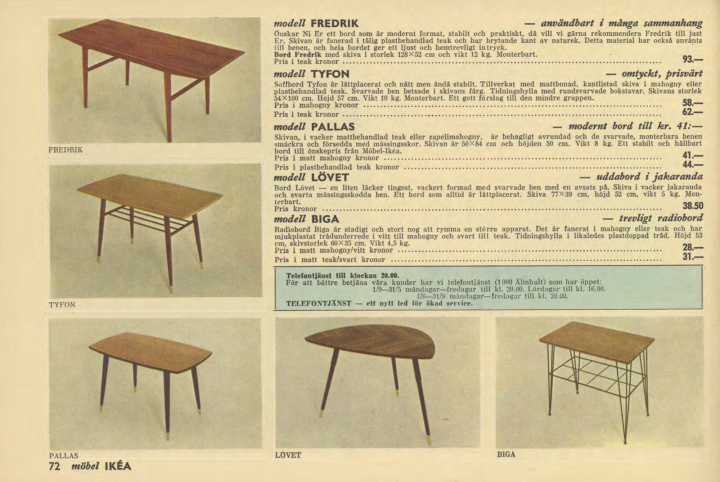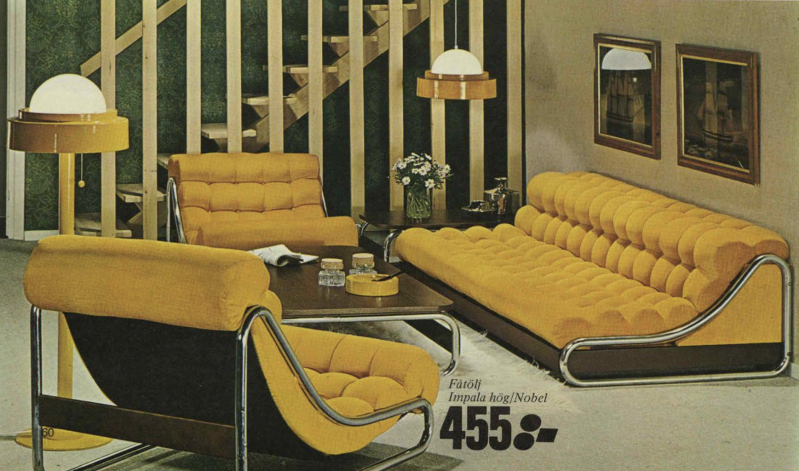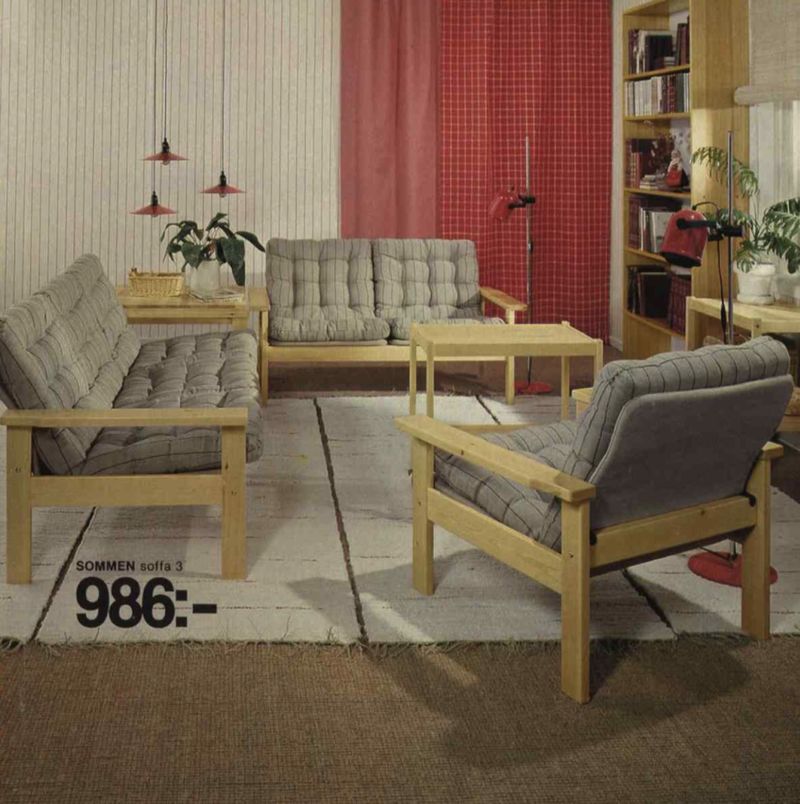Bloomberg / Marie Patino
https://www.bloomberg.com/news/articles/2020-08-25/it-s-time-to-browse-every-ikea-catalog-since-1951?srnd=premium-asia
As millions of people around the world become intimately familiar with their home decor, the Swedish furniture giant IKEA is offering an online resource to fuel your redecoration reveries: In honor of the the 70th anniversary of the company’s first catalog, IKEA just dropped digital versions of every catalog on its museum website. If your idea of a good time is wandering the labyrinth of your local IKEA showroom, trying out sectionals in a pretend living room, this digital trove of modular furniture makes an excellent and Covid-safe alternative distraction — and a fascinating time capsule of Scandinavian design trends.
As of 2019, IKEA boasts 433 stores across 53 countries, inundating markets around the globe with its distinctive brand of affordable build-it-yourself products. The company has been around since 1943, when founder Ingvar Kamprad launched it as a mail-order business selling matches, postcards and pencils in the Smaland region of Sweden. But the first proper IKEA catalog didn’t come out until 1951, says IKEA Museum archive and collections manager Per-Olof Svensson. On its cover: the iconic MK wing chair. It was discontinued a few years later, but made a retro comeback in the 2013 and 2014 catalogs as STRANDMON.

The business took off, and fast: Customers could phone or mail in their orders by returning a coupon included in the catalog. Starting in 1958, they could drop by the first IKEA store, in Almhult, Sweden, and go home with the item of their choice. The “supermarket for furniture” concept is part of what made IKEA such a success. But the do-it-yourself assembly wasn’t the original idea. “At first, it was already assembled products,” Svensson says. “But quite early we tried to experiment by taking off the legs from the tables.” The birth of flat packaging can be traced back to an employee who started unmounting the legs of a LOVET table to safely load the piece into a customer’s trunk.

The early catalogs are comparatively utilitarian affairs; things don’t get really interesting until the late 1960s and ’70s, when colorful plastics and zany fabrics emerge and photos began displaying the furniture in sample living arrangements that still look inviting today. Check out this space-age living room from 1973.

The catalog’s illustrations also serve as a timeline of household technology. The first television shows up on page 88 in 1958, and soon the new devices proliferate and begin to dominate the home; the size of entertainment centers gradually increases, and the orientation of living room couches and armchairs progressively shifts, from facing one another to pointing toward the TV screen.

The company opened its first store outside of Scandinavia in 1973, in Spreitenbach, Switzerland. International expansion was a turning point in the company’s branding: Its Swedish roots turned into the foundations of its brand identity, making IKEA an instrument of Swedish soft power. Going global meant “Swedifying” the brand, writes design historian Sara Kristoffersson in her cultural history of the company, Design By IKEA. The company’s iconography and design sensibility ultimately became synonymous with Sweden itself. She recounts a story of a Spanish soccer fan asking, “Why is the Swedish team sponsored by IKEA?” at the Euro 2012 championship: “The Swedish team’s blue and yellow kit clearly triggered associations with IKEA, rather than with the Swedish flag.”
The cover of the 1973 Swedish catalog features the TAJT chair, a foldable futon covered in denim fabric. Apart from being a year of international expansion, ’73 was a big year for denim.

In 1979, the iconic BILLY bookcase makes its first appearance. It’s probably the most popular item IKEA ever put out — the company claims that about one unit is sold every five seconds — and has become the base for a never-ending list of IKEA hacks. Need wall dividers for your home office? A dollhouse? A DIY Murphy bed? BILLY’s got you covered, if you’re crafty enough to figure it out.

IKEA made it to the U.S. in 1985, drawing 150,000 customers to its first store in suburban Philadelphia during opening week, some from as far away as Massachusetts, the New York Times reported. Critics wondered whether Americans would go for smaller European-sized beds, but yuppies couldn’t get enough of the company’s modernist wares, and IKEA’s march across the American landscape began.
Success, however, came at a cost: The company is said to consume 1% of the world’s lumber. To reduce its wood consumption, IKEA dropped its popular shelving system, EXPEDIT, and replaced it with the thinner-walled KALLAX, which first appeared in a catalog in 2015. It looked pretty much the same, but EXPETIT aficionados were still outraged.

One thing hasn’t changed: Buyers still bemoan the durability of laminated particle-board furniture. (Ask anyone who has attempted to move a BILLY from one apartment to another without having it disintegrate en route.) But IKEA archivist Svensson, a proud second-generation IKEA staffer, notes that some of the company’s products can live on and on.
Take, for example, all the assorted pots, pans, and IKEA kitchen gear he received as a gift from his parents when he left home in the mid-1980s. “When I moved away from my parents, we had a range called the STARTBOX, where you could get all the things you needed in the kitchen,” he says. “My dad was heavily involved in bringing this to life.”

Decades later, plenty of his old STARTBOX kitchenware, Svensson says, is still going strong. “So that is close to my heart.”